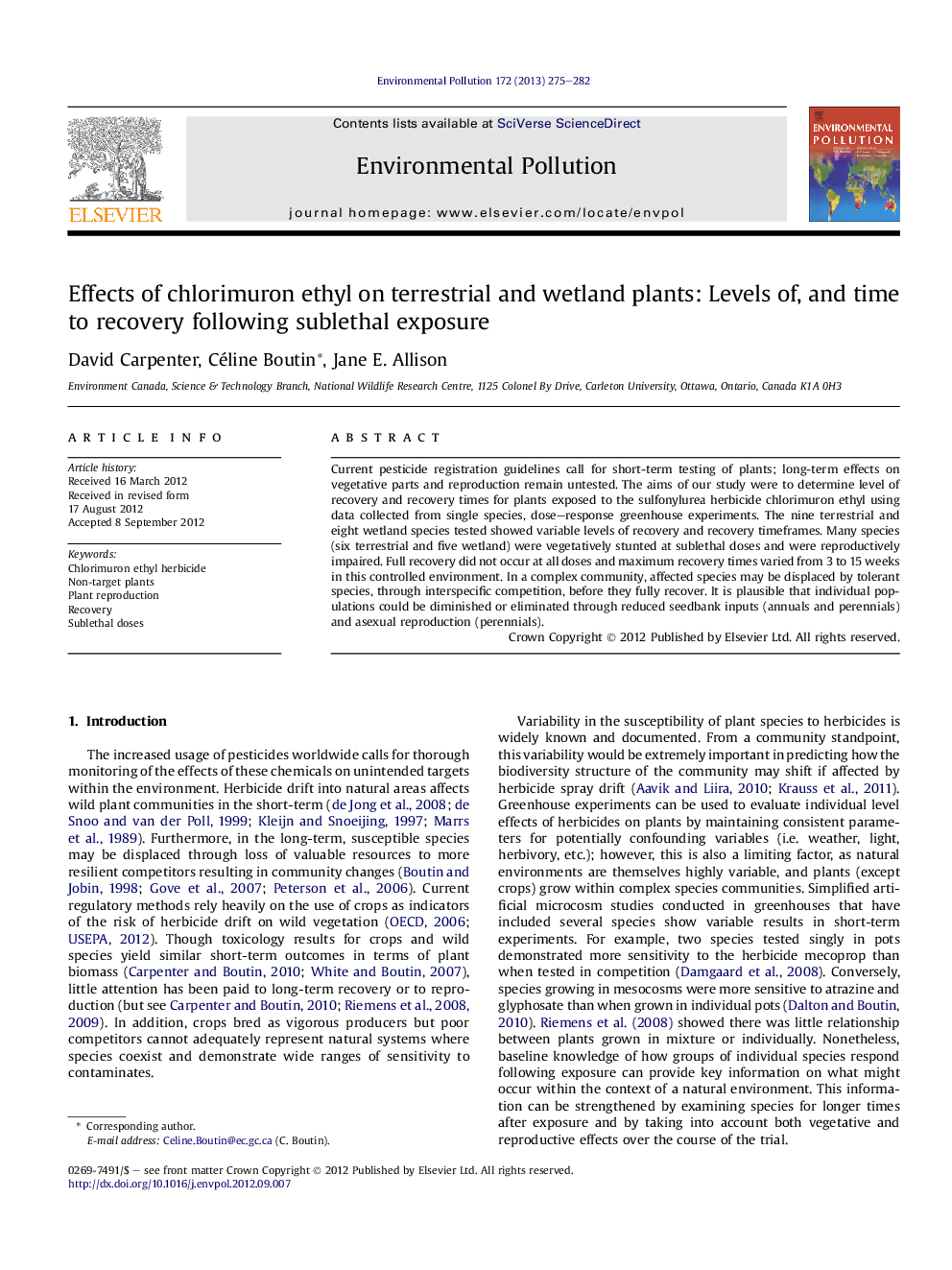| Article ID | Journal | Published Year | Pages | File Type |
|---|---|---|---|---|
| 4424741 | Environmental Pollution | 2013 | 8 Pages |
Current pesticide registration guidelines call for short-term testing of plants; long-term effects on vegetative parts and reproduction remain untested. The aims of our study were to determine level of recovery and recovery times for plants exposed to the sulfonylurea herbicide chlorimuron ethyl using data collected from single species, dose–response greenhouse experiments. The nine terrestrial and eight wetland species tested showed variable levels of recovery and recovery timeframes. Many species (six terrestrial and five wetland) were vegetatively stunted at sublethal doses and were reproductively impaired. Full recovery did not occur at all doses and maximum recovery times varied from 3 to 15 weeks in this controlled environment. In a complex community, affected species may be displaced by tolerant species, through interspecific competition, before they fully recover. It is plausible that individual populations could be diminished or eliminated through reduced seedbank inputs (annuals and perennials) and asexual reproduction (perennials).
► Native terrestrial and wetland plants were used to assess the risks of herbicide drift. ► Vegetative and reproductive health endpoints were evaluated over time. ► Recovery rates were found to be both species and dose dependant. ► Reproductive recovery does not always equal vegetative recovery. ► Susceptible species may be displaced by resilient or resistant species.
